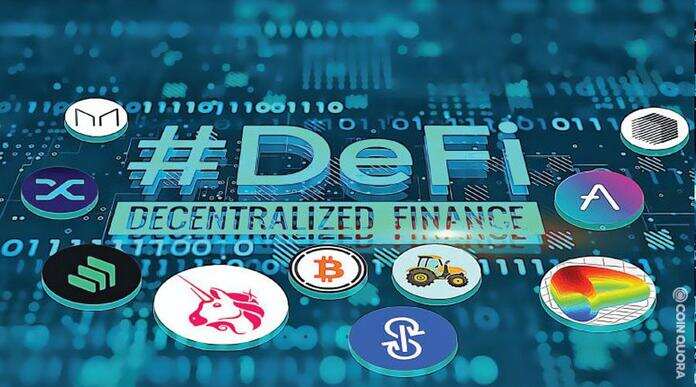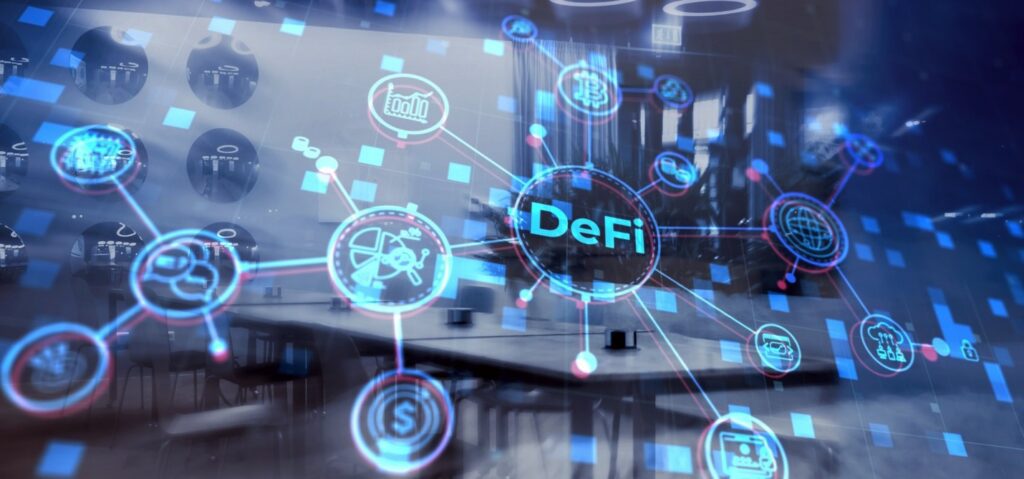A Complete Guide to DeFi Platforms: Revolutionizing Finance in 2025

Decentralized Finance (DeFi) platforms are transforming the global financial system by offering users an alternative to traditional financial institutions. These blockchain-based platforms allow individuals to access a wide range of financial services without the need for intermediaries such as banks or brokers. In this comprehensive guide, we’ll explore what DeFi platforms are, how they work, their benefits, and the top DeFi platforms leading the way in 2025.
What are DeFi Platforms?
DeFi platforms are decentralized applications (dApps) built on blockchain networks that enable peer-to-peer financial transactions and services. Unlike traditional finance, which relies on central authorities like banks and financial institutions, DeFi platforms leverage blockchain technology to eliminate intermediaries and provide users with more control over their financial assets.
- Key Features of DeFi Platforms
DeFi platforms typically offer a range of financial services, including lending, borrowing, trading, insurance, and savings, all powered by smart contracts on blockchain networks like Ethereum, Binance Smart Chain, and Solana. - The Role of Blockchain in DeFi
Blockchain technology ensures the transparency, security, and immutability of DeFi transactions. With blockchain, all transactions are recorded on a public ledger, making it easy for users to verify transactions without relying on a third party.
How Do DeFi Platforms Work?
DeFi platforms work by utilizing smart contracts to automate financial services and eliminate the need for intermediaries. Here’s an overview of how they function:
- Smart Contracts and Automation
Smart contracts are self-executing agreements with the terms directly written into code. DeFi platforms use these contracts to automate processes like lending, borrowing, and trading, ensuring that all conditions are met before the transaction is executed. - Tokenization and Liquidity
DeFi platforms allow users to tokenize assets such as cryptocurrencies, real estate, and commodities. These digital assets can then be used to generate liquidity, enabling users to participate in various financial services, such as yield farming or liquidity mining. - Decentralization and Peer-to-Peer Transactions
DeFi platforms operate in a decentralized manner, meaning there is no central authority or intermediary controlling the transactions. Users can engage directly with one another, removing the need for middlemen and reducing costs.

Benefits of Using DeFi Platforms
DeFi platforms offer numerous advantages over traditional finance systems, including:
- Increased Accessibility
DeFi platforms provide access to financial services for individuals who may not have access to traditional banking, especially in developing countries or regions with limited banking infrastructure. All you need is an internet connection and a cryptocurrency wallet. - Control Over Your Assets
Unlike traditional banks, DeFi platforms allow you to maintain full control over your assets. Users hold their private keys and are responsible for their own funds, reducing the risk of third-party mishandling or fraud. - Lower Fees and Faster Transactions
DeFi platforms significantly reduce transaction fees compared to traditional financial services. By removing intermediaries, DeFi platforms offer faster and cheaper transactions, which is especially beneficial for cross-border payments. - Transparency and Security
The decentralized nature of DeFi platforms ensures that all transactions are transparent and recorded on a public blockchain. This makes it easy to verify transactions, and the use of cryptography ensures a high level of security.
Popular DeFi Platforms in 2025
Several DeFi platforms are leading the charge in the DeFi space, providing innovative solutions for users worldwide. Here are some of the top DeFi platforms to watch in 2025:
- Uniswap
Uniswap is a decentralized exchange (DEX) that allows users to trade cryptocurrencies without an intermediary. It uses an automated market maker (AMM) model, where liquidity providers supply assets to pools, and users can trade directly from these pools. - Aave
Aave is a decentralized lending and borrowing platform that allows users to lend their assets in exchange for interest or borrow assets at competitive rates. Aave also offers flash loans, which are short-term, unsecured loans that can be used within a single transaction. - Compound
Compound is another popular DeFi lending platform that allows users to earn interest on their crypto assets. It supports a wide range of cryptocurrencies and provides users with a flexible way to grow their holdings by earning passive income. - MakerDAO
MakerDAO is the platform behind the DAI stablecoin, which is pegged to the US dollar. MakerDAO enables users to mint DAI by locking collateral into smart contracts, providing a decentralized way to issue stablecoins and manage collateralized debt positions. - Yearn.finance
Yearn.finance is a yield aggregator platform that optimizes user investments by automatically moving funds between different DeFi protocols to achieve the highest possible returns. It simplifies the process of yield farming and allows users to maximize their earnings.
Also Read; A Complete Guide to Smart Contracts: Revolutionizing the Future of Transactions in 2025

Risks and Challenges of DeFi Platforms
While DeFi platforms offer significant benefits, they are not without risks:
- Smart Contract Vulnerabilities
Smart contracts, while secure, are still susceptible to coding errors or vulnerabilities that could be exploited by hackers. DeFi platforms need to conduct rigorous audits to minimize the risks of bugs or exploits. - Regulatory Uncertainty
The regulatory landscape for DeFi platforms is still evolving. Governments and financial authorities are beginning to scrutinize DeFi projects, which may lead to new regulations or restrictions that could affect the operation of DeFi platforms. - Liquidity Risks
Some DeFi platforms may face liquidity challenges, especially during periods of high demand. Users should be aware of the risks involved in providing liquidity to these platforms, as the value of assets can fluctuate. - Market Volatility
DeFi platforms are often built on volatile cryptocurrencies. While this can present opportunities for high returns, it also exposes users to the risk of significant losses due to market fluctuations.
Conclusion: The Future of DeFi Platforms in 2025 and Beyond
DeFi platforms are revolutionizing the financial landscape by providing decentralized, transparent, and secure alternatives to traditional financial services. They enable users to access a wide range of financial products, including lending, borrowing, and trading, all without intermediaries. As DeFi continues to grow, it is expected to play a key role in shaping the future of finance, offering greater financial inclusion and innovative solutions for users worldwide.
While challenges such as regulatory uncertainty and smart contract risks remain, the continued development of DeFi platforms is expected to bring more robust and secure solutions to the market. By understanding the benefits, risks, and top DeFi platforms, users can make informed decisions and take full advantage of the opportunities DeFi offers in 2025.




